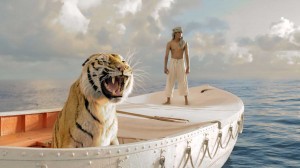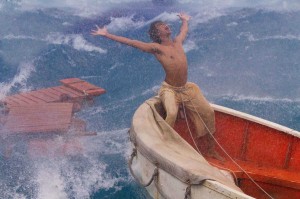
Based on the best-selling novel by Yann Martel, Life of Pi is a magical adventure story about a young castaway and the Bengal tiger that survives a tragic shipwreck with him. Directed by Oscar-winner Ang Lee, the breathtaking 3D film was edited by Tim Squyres who has been working with the director for over 20 years and edited all of his films with the exception of Brokeback Mountain.
“I understand the way he makes movies,” said Squyres. “He learned to make movies with me editing them and I learned to edit by editing his movies. We’ve kind of grown up doing this together.” So strong is the understanding between them that the director has never given him notes on how to cut a scene, and during production they rarely even talk. “While he’s shooting, what he needs to know from me is whether he has got it covered,” explained Squyres. “Then he’d rather think about what he is shooting tomorrow than what he shot yesterday. If our collaboration works, it is because we think about filmmaking very similarly. If it makes sense to him shooting it, it will make sense to me cutting it.”

Life of Pi was a very different experience for the filmmakers because it was 3D and shot on water – two major limitations in the production of the film. Because of the heavy visual effects, the team had to plan the coverage very thoroughly. Much of the footage was shot in a wave tank. In addition, the boy and the tiger were never actually in the boat together, and often the tiger was not even real. For the first time, the director prevized a large portion of the film – from the time the ship sinks until they leave the island. The editing process was adjusted to take into account the technology with the editor coordinating the early versions of visual effects in order to cut the story.
“When I first assembled a scene, I would assemble it with just the plates, but by the next day or two we would have the tiger in all the shots. We got the clean tiger animation, 2D on green, and then we keyed it into our shot. I also had several different tiger models that I could move around,” Squyres explained. “By the time I sent cut scenes back to Ang, we had a tiger in them. When we screened the assembly there were only about five shots where you could even see the walls of the wave tank. We had a sky and an ocean and a tiger in everything. Sometimes they weren’t good, but in terms of blocking, we had that covered right away.”

Squyres’ previous experience on The Hulk prepared him for the workflow that was needed to efficiently edit Life of Pi. It was necessary to have the elements in place to be able to properly time and pace the shots and scenes as well as to avoid costly and time-consuming do-overs. “We would imagine what the tiger was going to do. Sometimes I would leave things a little bit long. Then we would work with the animators and I would adjust the shot once we had our first blocking pass,” said Squyres.
The hardest part of the editing was the large-scale structure of the film. An inherent part of the original story, and a reason why it has taken so long to bring it to the screen, is the lack of a strong narrative drive pulling the viewer through a major portion of the movie. Voiceover was used to address story points and get into the characters thoughts, in a similar way that a book format naturally conveys inner character narrative. “It is very hard to do a film where someone is lost at sea, and have the audience not feel like they’re lost at sea,” Squyres commented. “Once the ship sinks, Pi is just reacting. He has development in his relationship with Richard Parker, but things happen whenever they happen. Decisions to leave things in or take them out, none of those decisions are ever straightforward. We made those choices. That was the hardest part of the film, getting the overall structure and tone right.”





